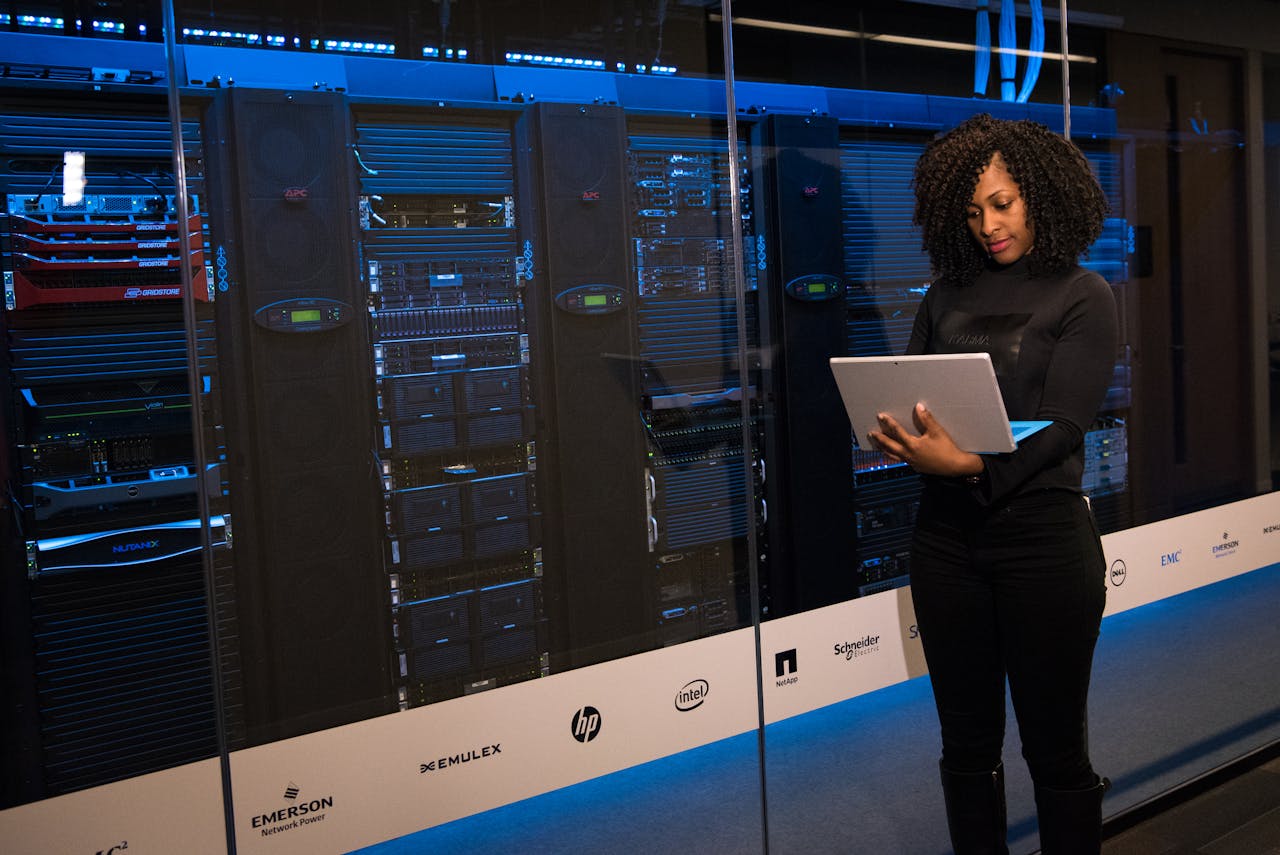Welcome to our comprehensive guide exploring how digital tools reshape how businesses handle goods, information, and resources. Today’s supply chain processes face unprecedented challenges – from pandemic disruptions to shifting consumer demands. But here’s the good news: innovative solutions are transforming chain logistics and inventory management.
Gartner predicts that by 2023, half of global eCommerce firms will adopt artificial intelligence and real-time analytics. Why? Because volatile markets demand smarter approaches. Cloud computing and IoT devices now enable companies to track shipments globally, while machine learning optimises warehouse tasks like picking and packing.
We’ve seen first-hand how digital transformation helps businesses tackle geopolitical uncertainties. Real-time data accessibility allows for agile responses, while blockchain technology strengthens transparency. These aren’t just buzzwords – they’re lifelines for maintaining competitive chain management systems.
Key Takeaways
- Global events have accelerated investment in intelligent logistics solutions
- Real-time analytics drive smarter inventory decisions
- Over 50% of eCommerce firms prioritise AI adoption by 2023
- Automation reduces errors in warehouse operations
- Blockchain enhances traceability across supply chains
In the following sections, we’ll unpack how these chain technologies create resilient networks. From predictive analytics to IoT-enabled tracking, discover tools that turn supply chain headaches into strategic advantages. Let’s dive in!

Digitalisation and Its Impact on Supply Chain Efficiency
Material shortages and port congestion have accelerated a seismic shift in how businesses manage their supply chains. Gone are days of relying solely on spreadsheets or handwritten logs. Today, 67% of logistics leaders prioritise digital transformation to tackle bottlenecks – and the results speak for themselves.
Transforming Traditional Processes
Paper-based systems crumble under modern demands. Automated platforms now handle invoicing, shipment tracking, and inventory updates with 99% accuracy. One automotive manufacturer slashed order-processing errors by 40% after adopting cloud-based chain management tools.
Boosting Operational Agility
Real-time data fuels smarter decisions. When a cargo ship stalled in Los Angeles last year, companies using IoT sensors rerouted goods within hours. This agility stems from technology supply chain integrations that provide live updates on stock levels, transit delays, and supplier capacities.
Port congestion alone costs US businesses £2.3 billion monthly. Yet firms leveraging digital solutions report 30% faster recovery times during disruptions. It’s clear: blending automation with actionable insights isn’t optional – it’s survival.
The Role of Technology in Modern Supply Chain Management
Evolving market dynamics require businesses to leverage supply chain management technologies for streamlined operations. At our core, we’ve seen how these tools turn logistical challenges into competitive edges – and the numbers prove it.
Why It Matters to Our Business
In our operations, integrating supply chain management technologies has been transformative. Take a major UK retailer, for example. By adopting AI-driven demand forecasting, they slashed stockouts by 37% within six months. This isn’t luck – it’s the power of technology supply chain tools turning raw data into actionable insights.
Machine learning algorithms now optimise delivery routes in real-time. One logistics firm reported a 22% drop in fuel costs after implementation. These aren’t isolated wins – they’re measurable outcomes of chain management innovation.
Consider predictive analytics in inventory control. Companies using these systems achieve 94% order accuracy rates compared to 78% with manual processes. For us, this means happier customers and fewer costly errors.
Without digital transformation, managing multi-tiered suppliers would resemble guesswork. Real-time tracking dashboards and IoT sensors provide the visibility needed to pivot during disruptions. It’s why 68% of industry leaders now prioritise tech integration over traditional methods.
Every pound saved through chain technology adoption directly boosts our market position. From automated warehouses to blockchain-enabled traceability, these solutions aren’t just convenient – they’re business lifelines in an unpredictable world.

Advanced Innovations in Supply Chain Technology
Cutting-edge tools are rewriting the rules of how goods flow worldwide. Businesses now harness breakthroughs that seemed like science fiction five years ago – think self-learning algorithms and tamper-proof digital ledgers. These aren’t just upgrades; they’re complete game-changers for supply chain management.
Artificial Intelligence and Machine Learning
AI does more than crunch numbers. One European automaker uses machine learning to predict spare part demand 12 weeks ahead, slashing overstock by 29%. These systems analyse weather patterns, social trends, and even competitor pricing to make razor-sharp forecasts.
We’ve seen retailers reduce stockouts by 53% using AI-powered inventory management. It’s like having a crystal ball that factors in Black Friday sales and typhoon delays simultaneously. The result? Happier customers and leaner warehouses.
Internet of Things and Blockchain
IoT sensors now track everything from lettuce freshness to pharmaceutical temperatures. A major US grocer cut food waste by 37% using real-time spoilage alerts. These devices feed real-time data into central dashboards, letting teams spot bottlenecks before they escalate.
Blockchain’s strength lies in creating trust between strangers. When a seafood exporter adopted this chain technology, buyers could trace every tuna steak back to its catch location. Fraud claims dropped to zero within months. That’s the power of unbreakable digital records.
These innovations aren’t without hurdles – integration costs and skills gaps remain. But early adopters gain decisive advantages. As one logistics CEO told us: “If you’re not riding this wave, you’re already underwater.”
Automation and Robotics in Warehouse Operations
Warehouses are no longer just storage spaces – they’ve become high-tech hubs where machines and humans collaborate smarter. Over 65% of US fulfilment centres now integrate robotics, with giants like Amazon processing 1,000 items hourly per robot. This shift isn’t about replacing people; it’s about amplifying their capabilities in supply chain management.
Robots in Order Fulfilment
Speed matters when customers expect next-day delivery. Automated guided vehicles (AGVs) slashed order-processing times by 58% at a major UK retailer last year. These systems use real-time data to navigate aisles, fetching items 3x faster than manual pickers.
Amazon’s Kiva robots exemplify this leap. Their fulfilment centres now handle 4x more orders daily with 99.9% accuracy. For businesses, this means fewer missed deadlines and happier clients – crucial in competitive chain logistics.
Collaborative Robots Enhancing Safety
Cobots work alongside staff without safety cages. A global manufacturer reported 72% fewer workplace injuries after deploying these machines for heavy lifting. Sensors detect human movement, instantly pausing operations if someone gets too close.
These innovations also tackle repetitive strain. One automotive parts supplier reduced worker fatigue by 41% using cobots for picking and packing tasks. Safer environments mean lower turnover – a win for both staff and supply chain efficiency.
| Aspect | Manual Process | Automated System |
|---|---|---|
| Order Speed | 45 mins/item | 12 mins/item |
| Accuracy Rate | 89% | 99.9% |
| Safety Incidents | 18/month | 5/month |
| Cost Efficiency | £12.50/order | £8.70/order |
As these numbers show, blending technology supply chain tools with human expertise creates warehouses that are both faster and safer. The future? Think robots handling midnight rushes while teams focus on quality control – a true partnership in chain management excellence.

Cloud Computing and Real-Time Data Management
Imagine having every piece of your supply chain data accessible from any device, anywhere. That’s the power cloud platforms bring to chain management. Over 73% of US businesses now use these systems to harmonise scattered information streams, creating a single source of truth for inventory tracking and logistics planning.
Benefits for Inventory Optimisation
Centralised data platforms eliminate guesswork. A UK fashion retailer reduced excess stock by 41% after migrating to a cloud-based inventory management system. Their AI-driven platform analyses sales trends, weather forecasts, and social media buzz to predict demand spikes weeks in advance.
Real-time visibility transforms decision-making. When a shipment delay hits, cloud tools instantly recalculate stock allocations across warehouses. One electronics manufacturer avoided £2.3 million in lost sales last quarter using this real-time data approach.
- Scalable storage handles seasonal demand surges effortlessly
- Machine learning spots inventory patterns humans miss
- Multi-location teams access live updates simultaneously
These systems also slash operational bottlenecks. A food distributor cut order-processing time from 3 hours to 18 minutes using cloud-integrated predictive analytics. For businesses, this means faster responses to market shifts and happier customers.
Cloud solutions aren’t just about storage – they’re strategic assets. By blending digital transformation with instant data access, companies turn inventory challenges into competitive advantages. The result? Leaner operations and healthier profit margins.
Enhancing Supply Chain Visibility Through Data Analytics
Hidden patterns in logistics data hold the key to smarter supply chain management. We’ve watched companies transform guesswork into precision by harnessing predictive analytics – turning raw numbers into crystal-clear roadmaps for decision-making.
Predictive Analytics for Informed Decisions
Modern tools crunch historical sales figures and live shipment updates simultaneously. A European fashion brand reduced overstock by 33% using these systems. How? Algorithms spotted regional buying trends humans missed, adjusting inventory allocations weekly.
Cloud-based platforms merge real-time data from IoT sensors, weather feeds, and social media. This blend helps forecast disruptions before they strike. When a storm delayed shipments last winter, one retailer rerouted goods using predictive models – saving £1.2 million in potential lost sales.
| Metric | Traditional Approach | Data-Driven Strategy |
|---|---|---|
| Demand Forecast Accuracy | 68% | 92% |
| Risk Response Time | 72 hours | 4 hours |
| Inventory Holding Costs | £18.50/unit | £11.20/unit |
These numbers show why 79% of logistics firms now prioritise chain technology investments. Machine learning models learn from every shipment, constantly refining their predictions. The result? Fewer stockouts, leaner warehouses, and happier customers.
We’ve seen first-hand how data analytics builds supply chain resilience. One automotive supplier cut emergency freight costs by 41% after implementing AI-driven risk assessments. It’s not magic – it’s mathematics meeting real-world logistics.
Overcoming Supply Chain Disruptions with Digital Solutions
Global supply chains face storms of uncertainty – from material scarcities to cargo ships stuck offshore. But here’s what we’ve found: smart digital tools act as anchors, stabilising operations when traditional methods falter. Let’s explore how businesses turn disruption into opportunity.
Addressing Material and Freight Challenges
When suppliers struggle, real-time data becomes a lifeline. Take a US electronics firm that cut component shortages by 47% using predictive analytics. Their system cross-referenced 12 suppliers’ stock levels, automatically rerouting orders when delays hit.
Rising freight costs? Machine learning optimises carrier selection. One manufacturer slashed expenses by 28% after adopting AI that analyses fuel prices, route efficiency, and carrier reliability. These aren’t theoretical fixes – they’re proven chain management strategies.
Mitigating Port Congestion Issues
Port backlogs once caused weeks-long delays. Now, IoT-enabled tracking systems give companies escape routes. When Los Angeles queues hit record highs last year, firms using live shipment dashboards diverted 39% of cargo to less congested ports.
Blockchain streamlines documentation too. A coffee importer reduced customs clearance from 6 days to 8 hours using smart contracts. Less paperwork means faster turnover – crucial in today’s logistics supply chain.
| Challenge | Traditional Approach | Tech-Driven Solution |
|---|---|---|
| Port Wait Times | 21 days | 9 days |
| Freight Cost Increases | +47% YoY | +18% YoY |
| Rerouting Success Rate | 22% | 67% |
These innovations prove one thing: digital transformation isn’t about avoiding storms – it’s about building better ships. With the right tools, companies navigate choppy waters while competitors sink.

Integrating Sustainable and Scalable Supply Chain Technologies
Businesses now face a dual challenge: meeting eco-conscious demands while preparing for unpredictable growth. We’ve seen forward-thinking companies tackle both through clever tech integrations – blending green initiatives with systems that expand effortlessly as needs evolve.
Sustainability Trends Reshaping Logistics
Electric delivery fleets are just the start. A major UK retailer cut emissions by 41% using route-optimisation AI that balances speed and fuel efficiency. Their secret? Data analytics tools that track carbon footprints per shipment, helping teams choose greener suppliers automatically.
Circular economy models gain traction too. One fashion brand now recycles 78% of unsold stock using blockchain-tracked supply chain processes. Each item’s lifecycle gets logged, from factory to resale platform – reducing waste while boosting transparency.
Building Systems That Grow With You
Scalability means avoiding tech that becomes obsolete next quarter. Cloud-based platforms excel here – they adapt to handle 10x more orders without costly overhauls. A beverage company doubled its distribution network using modular technology supply chain tools, adding new warehouses in days rather than months.
AI-driven demand forecasting proves equally crucial. When a sudden TikTok trend spiked sales for a skincare startup, their system auto-adjusted production schedules and rerouted shipments. No human panic required – just smart chain management working behind the scenes.
These examples show sustainability and scalability aren’t competing goals. With the right digital backbone, businesses can future-proof operations while hitting environmental targets. It’s about building supply chain management systems that thrive today and adapt tomorrow.
Future Trends in Technology-Driven Supply Chain Management
What lies ahead for logistics networks in our hyper-connected world? We’re entering an era where supply chain management evolves faster than ever – driven by tools that blend speed with sustainability. Industry leaders predict quantum computing and 5G networks will redefine how goods move globally within five years.
Emerging Digital Innovations
Next-gen technologies are rewriting the playbook. Autonomous delivery drones now complete last-mile shipments in minutes, not days. One Asian eCommerce giant reduced urban delivery costs by 52% using these systems. Meanwhile, digital twin simulations let businesses test entire supply chain overhauls virtually before implementation.
Cybersecurity is becoming integral to chain management. As networks grow more connected, encrypted blockchain ledgers and AI threat detectors form critical defences. Recent breaches cost logistics firms £3.8 million on average – a risk no business can ignore.
The Roadmap for Digital Transformation
Successful transitions follow three phases:
- Assessment: Audit current technology supply chain capabilities and vulnerabilities
- Piloting: Test innovations like IoT-enabled pallets in controlled environments
- Integration: Scale solutions across operations with staff training programmes
Interoperability remains key. Systems must “speak” to partners’ platforms seamlessly. A European manufacturer boosted shipment visibility by 73% after standardising data formats with 18 suppliers.
Looking forward, businesses that prioritise technology adaptability will thrive. From predictive maintenance algorithms to carbon-tracking APIs, the future belongs to those who innovate boldly – and integrate wisely.
Conclusion
Navigating today’s complex logistics landscape demands more than traditional methods – smart digital integration separates industry leaders from the rest. Our journey through this guide highlights how blending technology with chain management creates resilient operations. From AI-driven forecasting to cloud-based tracking, these tools aren’t just optional upgrades – they’re survival kits in unpredictable markets.
Businesses adopting supply chain management innovations report 30% faster recovery during disruptions and 40% fewer inventory errors. With over half of logistics firms prioritising AI by 2023, standing still risks obsolescence. Real-time visibility and automated workflows turn logistical headaches into strategic advantages.
We’ve seen first-hand how early adopters thrive. One retailer slashed stockouts by 37% using predictive analytics, while manufacturers cut freight costs by 28% through intelligent routing. These aren’t isolated wins – they’re achievable milestones for any organisation ready to evolve.
The path forward? Start small but think big. Audit current systems, pilot IoT sensors or blockchain tracking, then scale successes. Remember: every efficiency gain strengthens customer trust and market position. Let’s build supply chains that bend but don’t break – together.



